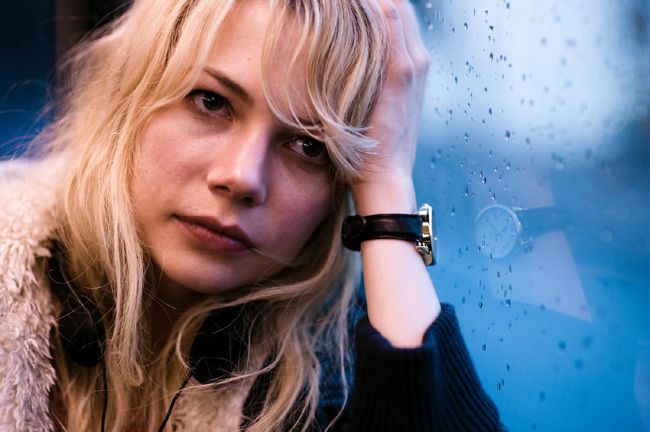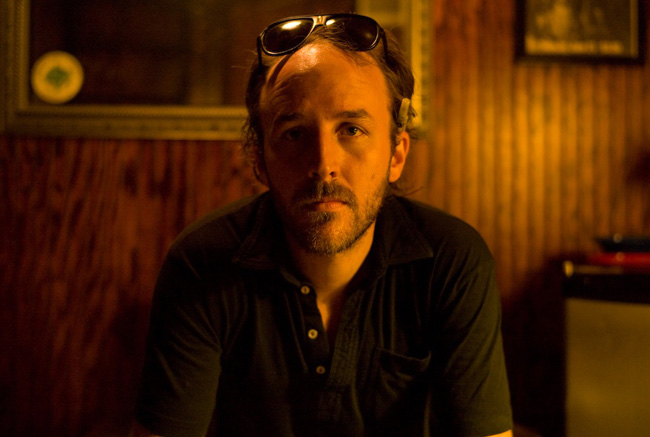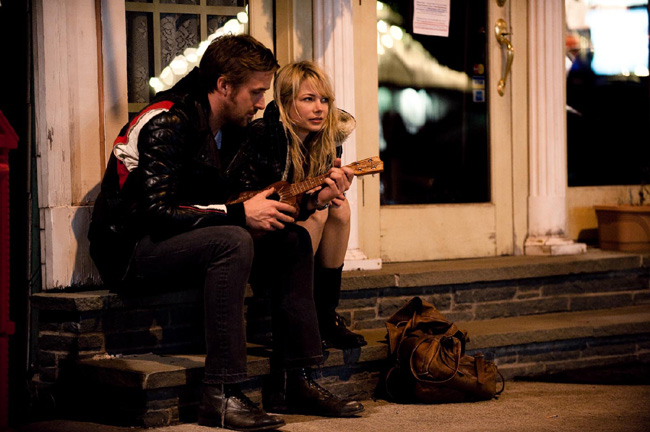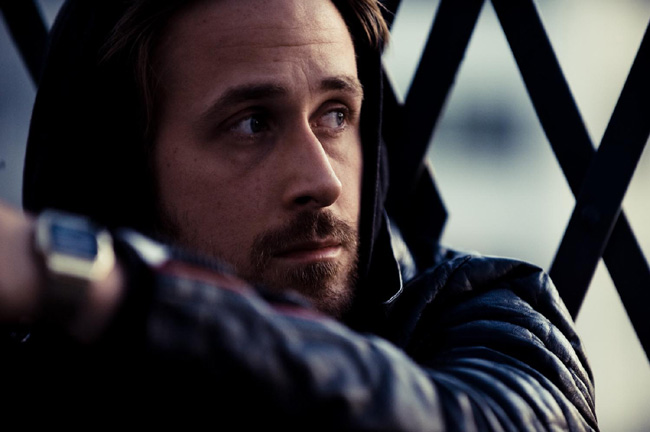CHICAGO – In anticipation of the scariest week of the year, HollywoodChicago.com launches its 2024 Movie Gifts series, which will suggest DVDs and collections for holiday giving.
Interview: ‘Blue Valentine’ Director Derek Cianfrance on Intensely Personal 12-Year Journey
CHICAGO – “Blue Valentine” director Derek Cianfrance is happily married now with two young children, but the road getting there was turbulent and sometimes still is. While that’s real life, romance films often end with the lucky guy getting the pretty girl and them living happily ever.
By contrast, “Blue Valentine” is often much more, well, blue. More important, it’s just genuinely real. The romantic drama feels somewhat like a fly-on-the-wall documentary (Cianfrance’s primary experience is in TV documentaries) even though it’s not billed or scripted that way. It understands the true dichotomy between our happy and heavy hearts. The film, which was released on Blu-ray and DVD on May 10, 2011, is one of the best movies of 2010 that didn’t win an Oscar.

Michelle Williams as Cindy in Derek Cianfrance’s “Blue Valentine”.
Photo credit: Davi Russo, The Weinstein Company
While Cianfrance says he sometimes felt like a “fraud” throughout his 12-year journey to write and direct this challenged love story (because he talked so long about making it and it took so long to happen), he finally feels liberated – and naked. How personal is this script?
Completely and intensely, he tells HollywoodChicago.com: “I put everything of myself in this movie. It’s extremely personal from all sides. I’m both of them [Dean, played by Ryan Gosling, and Cindy, played by the Oscar-nominated Michelle Williams for this role] as well as the child. When I wrote this film, I had two nightmares: nuclear war and divorce.” Our full interview with Cianfrance follows.
HollywoodChicago.com: You used a circular plot with crosscutting between time periods. Why?
Derek Cianfrance: That’s how I perceive time in my life. I’m always in a present day with short-term memory. For instance, if I think about my day today, I woke up at 7 a.m. and it’s 5 p.m. now. That’s 10 hours of being awake, alert and alive. If I went back to piece together those 10 hours, I probably could with about one hour of it. As I’ve been telling stories today about this film and my 12-year journey with it, that’s the past.
And that’s how “Blue Valentine” is. Whenever I’m in a present situation, everything that happened to me in my past informs that situation. I’m always remembering my life, things that have happened to me and the choices I’ve made in the past. That’s my present perspective. That’s how I perceive time. It’s not linear time for me. It’s folded on top of itself.
I built the film from that inspiration. It’s like a duet. It’s a duet between these two times, between love and hate, between a man and a woman, their past and their present, their youth and young adulthood, their sadness and happiness and their joy and anger. I made a movie about duality and contrast.

“Blue Valentine” writer and director Derek Cianfrance.
Photo credit: The Weinstein Company
HC: Talk to me about Michelle Williams and Ryan Gosling’s time together before filming the present day. You had them live in the same house for a month so they’d learn to love and fight.
DC: I knew Michelle since 2003 and Ryan since 2005. I tried to get the movie made with them during that time, but it never worked out until it finally worked out and we were able to do it. For those six and four years I knew them respectively, never once did I ever see them together. I just always had a feeling they’d work well together. I worked with them a lot individually. I consider them to be co-writers of the film with me.
By the time we started shooting the present, they had a lot of time to prepare their roles, but they didn’t really know each other. When I shot the first scene where he comes to the house with the flowers and his face is beat up, I just put the camera in the back of the room and I just watched. And there was an immediate chemistry between them.
I was so relieved that I could actually watch these two people falling in love. I felt like I was making a documentary about two people falling in love. I didn’t have to resort to cinematic manipulation or tricks to make them feel like they were falling in love. They were actually falling in love on the screen. So, we shot for three weeks about them falling in love.
Then the financier wanted us to take a weekend off and start shooting the present, but I told the financier I wanted to wait six years until we started with the present. They said no way. We fought, I had to give up a lighting truck and I was able to get a month off. We had a house with their daughter, Frankie (played by Faith Wladyka), for a month. We lived in that house. I had them do a budget and buy groceries based on that budget. They cooked food, did the dishes, got each other gifts, had birthday parties, went fishing, painted doghouses and did the Jane Fonda workout.
By the time we started shooting the present, they had a short life they experienced together. They had a shared memory whereas in the past they were just getting to know each other. They had to know how to fight with each other. I would have full days where I’d just have them pick fights with each other. We’d do eight hours of fighting. Then I’d bring Faith in and have her ask to go to the put put golf course. Ryan and Michelle would have to pull it together and bring all their negativity to the golf course with smiles. Their characters really developed that way.
HC: In the film, Cindy talks with Dean about his potentiality in life and wanting to do more with his artistic talents. This seems a lot like you here. How much of this script took from your personal life?
DC: I’ve been in a relationship before where I feel like Cindy. The girl wasn’t living up to her potential. When you fall in love with someone, you want to grow at the same rate together. You cross paths and you take a journey for a while. The goal is to take that journey together forever. But it’s hard when you get to a place where you hit a glass ceiling and you can’t go any further. You feel stuck by that person who won’t allow you to grow. Whenever you do grow, they see it as a threat and you can’t win in that situation.

Ryan Gosling (left) as Dean and Michelle Williams as Cindy in Derek Cianfrance’s “Blue Valentine”.
Photo credit: Davi Russo, The Weinstein Company
But, like you’ve said, I’ve also felt like Dean. It’s taken me 12 years to make this film. Sometimes I felt like a fraud. I felt like I was only talking about making this film and not making it. But I’ve always had ambition. That’s where I’m different from Dean. Still, I really respect Dean and his lack of ambition. I think it’s beautiful. He’s a pure artist. Why shouldn’t it be enough to just love your wife and kids? That’s a beautiful thing, but it doesn’t work in the real world.
As for putting a lot of myself into this movie, I put everything of myself in this movie. It’s extremely personal from all sides. I’m both of them (Dean and Cindy) as well as the child. When I wrote this film, I had two nightmares: nuclear war and divorce. My childhood is what Frankie goes through in this movie and the terror of that.
My co-writers, Joey and Cami, are both children of divorce. And so are Ryan and Michelle. We just tried to make the film as personal, vulnerable and intimate as possible. I get a dozen e-mails a day from strangers all over the world who’ve seen the film and they’re telling me their very personal stories. It’s amazing how it comes full circle. You get out what you put in. We put ourselves in there naked and now people are sending me themselves naked and emotionally exposed.
HC: By the way, along with your film doing so well at Sundance, the Chicago Film Critics Association named you its promising filmmaker of 2010. Clearly you have a lot of future potential.
DC: Wow. What a f*cking honor. Thank you. But what does that mean? Potential? Kidding.
HC: (spoiler alert) Romance films often have happy endings where the guy gets the girl. That’s not entirely the case here, eh?
DC: I like happy endings. I’m not opposed to them. We always see the romance movie where two people fall in love and they go off to their castle somewhere and live happily ever after. But you never see what happens after they have to share a bathroom. You never see what happens after time does its mysterious thing.
To me, the end of “Blue Valentine” does still have a happiness to it. It has a hope. The hope is that Dean and Cindy will be OK. I think they’ll be OK because there is a disease in the relationship. There is something wrong with their relationship and it gets recognized by the end of the film. It just took too long to recognize it.

Ryan Gosling (left) and Michelle Williams in Derek Cianfrance’s “Blue Valentine”.
Photo credit: Davi Russo, The Weinstein Company
It’s like the movie “Alien”. When that monster comes out, it’s so violent. But that’s because it’s in there so long. If you get it out before it has a chance to grow into that monster, it could be OK. It takes too long and Dean and Cindy don’t recognize it. When it comes out for them, it’s brutal. But at least it’s out. When my own parents split, I thought maybe they’d get back together next week. Then it was six months. Then a couple years. I have a feeling there’s hope for Dean and Cindy.
There’s obviously a love between them. They just don’t know how to survive together. This is a story of personal survival. In my life and my relationships, I’m always wondering how you maintain your individuality when you’re half of a whole. How do you maintain 100 percent of who you are when you’re half of a whole of something else?
HC: I spoke to the director of “The King’s Speech” about how an “R” rating in the U.S. hurt his film. It was billed as a “family film” in other parts of the world and it made much more money elsewhere. Talk to me about “Blue Valentine” going from “NC-17” to “R” and what that did for your film.
DC: The best thing that happened with the “NC-17” battle is that we didn’t have to touch a frame of the movie to get an “R” rating. We started a dialogue in America about why violence is OK but sex is taboo. We always treated sex with a certain responsibility. In “Blue Valentine,” we weren’t trying to sensationalize it or make it titillating or overly erotic.
We were just showing sex as a point of dialogue between two people and also a bone of contention between the same two people. We don’t really show that much in the film. The fact that we were slapped with an “NC-17” rating was a compliment to the power of the film for what people felt when they were watching it. It was amazing to be in the center of that and to have Harvey Weinstein go to battle for the film.
As Ryan said, it was “nice to see Harvey use his super powers to fight for good and not evil”. It was historic, too. It was the first time ever the MPAA on an appeal unanimously voted to overturn one of its rulings.
And I’m thankful they gave me my rights back as a parent to decide if my kids can watch this movie. As a parent, my 6-year-old and 3-year-old can’t watch “Blue Valentine”. I’ll show them the first 20 minutes and then turn it off. When I think they’re ready, I’ll show it to them. When they’re of age and ready to watch an “R”-rated movie, I’d rather show them “Blue Valentine” than a movie that treats sex in a sensationalized and fake way. I think it’s nice not to lie to people.

Ryan Gosling in Derek Cianfrance’s “Blue Valentine”.
Photo credit: Davi Russo, The Weinstein Company
I’m thankful the MPAA has reversed its decision. And now we’ll see what happens going forward with sexuality in American film. We’ll see if there’s been a new standard set by this. I would like to see sexuality portrayed without fake groaning and grinding close-ups of people’s faces and fake shots of people’s hands rising up on each other. I hate that.
HC: This wasn’t a documentary, but it did feel like you’re a fly on the wall watching actual events unfold. It never felt like Hollywood. Anyone who’s been in any kind of relationship can pull something from this film about their own. I can see this film as cathartic healing for people going through their own divorce. Go to therapy, sure, but watch this film for a new kind of liberating therapy, eh?
DC: Exactly. We tried to make it very specific to these characters, but very open so people can put themselves inside of them. People do relate.
HC: Film scheduling was changed around Heath Ledger’s death (with whom Michelle Williams had a child) and also because of Williams because you were sold on having her…
DC: Yeah, I delayed the film because of his death, and then again a year later when we had an opportunity to film. I wrote this film on a beach. It took place in Morro Bay, Calif. I called Michelle and asked her to pack her bags to California, but she said she can’t do it. She said she made a promise to her daughter that year that she’d tuck her into bed every night and keep her in school.
I said there are schools in California and beds here, but she was crying and said she made a promise to her kid and she can’t break the promise. I understand because I’m a parent and I’d never lie to my kids. I hung up the phone. I thought to myself about how she could make such a selfless decision like that for her daughter over a film she wanted to make for a third of her life even though she was the only person who could play this role.
I called her back the next day and said: “If I can get you home every night to tuck her into bed and drive her to school every morning, would you do the film?”
She said: “Oh my god, that’s the most generous thing anyone’s ever offered me!” So I went on Google Maps and typed in where her house is upstate and looked in an hour radius. I landed on Scranton, Penn. I got in my car and drove up there to check it out. I thought it was a lot like Morro Bay but without an ocean. But I thought to myself: “Who cares? What’s more important to me: Michelle or an ocean? Michelle is as deep as the ocean. I’ll take her.”
 | By ADAM FENDELMAN |


